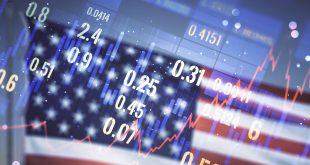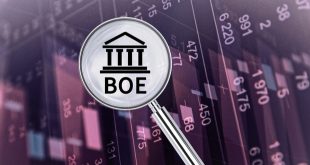The latest inflation data offers a moment of respite, yet the economic landscape remains clouded by significant policy uncertainty, posing a complex challenge for the Federal Reserve. While recent figures suggest a cooling of price pressures, the erratic nature of trade policies introduces a volatile element that could swiftly alter the economic outlook and complicate the central bank’s path forward.
The Nuance of April’s Inflation Data
The Personal Consumption Expenditures (PCE) price index, the Federal Reserve’s preferred inflation gauge, showed a welcome slowdown in April. The index climbed 2.1 percent from a year earlier, a slight decrease from the previous 2.3 percent and moving closer to the Fed’s 2 percent target. On a monthly basis, prices increased a modest 0.1 percent. The “core” PCE index, which excludes volatile food and energy costs, also rose by 0.1 percent in April, bringing its annual increase to 2.5 percent, down from 2.6 percent in March.
San Francisco Federal Reserve Bank President Mary Daly acknowledged these figures as a “relief” for consumers grappling with high prices. However, she underscored that the picture remains “incomplete,” hinting at potential risks of higher inflation looming ahead. This cautious optimism is further supported by a significant drop in inflation-adjusted personal spending, which rose only 0.1 percent for the month, a sharp contrast to March’s 0.7 percent increase. Personal income did see a jump in April, largely attributed to a rise in Social Security payments.
Trade Policy’s Disruptive Shadow
The apparent calm in inflation data is juxtaposed against a backdrop of considerable economic instability, primarily stemming from President Trump’s frequently shifting trade policies. The period covered by the Commerce Department’s data saw the President unveil and then quickly retract aggressive tariffs against major trading partners, a move that rattled U.S. government bond markets.
Subsequent tentative deals with some nations, like the United Kingdom, have been followed by renewed threats of levies on imports from the European Union, only to be delayed days later.
This constant back-and-forth has left businesses and consumers in a state of unease. Major retailers like Costco have announced efforts to pull forward purchases to circumvent potential tariffs, while Walmart has already warned of likely price increases. The unpredictability has directly impacted trade data, with imports of everyday items dropping nearly 20 percent in April, the largest monthly decline on record, and the goods trade deficit almost halving.
This volatility makes it exceedingly difficult to forecast how significantly prices may rise or how the economy will slow over time.
The Federal Reserve’s Precarious Path
The April data reinforces the Federal Reserve’s current strategy of patience regarding interest rate cuts. Officials maintain that the economy is in sufficiently solid shape, with low layoffs, allowing them to take their time before making policy adjustments. However, this approach places the central bank in a difficult position, particularly given President Trump’s vocal desire for lower borrowing costs.
During a private meeting, President Trump conveyed his view to Fed Chair Jerome Powell that the central bank was making a mistake by not reducing borrowing costs. Chair Powell, in turn, reiterated that monetary policy decisions would “depend entirely on incoming economic information and what that means for the outlook.” This exchange highlights the delicate balance the Fed must strike between its dual mandate of price stability and maximum employment, and external political pressures.
Minutes from the FOMC’s May meeting reveal that the central bank’s staff anticipates slower growth and higher unemployment, alongside a projection that tariffs will “boost inflation markedly this year and to provide a smaller boost in 2026.” This combination of slowing growth and rising prices carries the distinct risk of a stagflationary shock, forcing the Federal Reserve to make painful trade-offs in prioritizing its critical goals. The path ahead for monetary policy is thus not merely about reacting to data, but navigating a landscape increasingly shaped by unpredictable policy shifts.

 Noor Trends News, Technical Analysis, Educational Tools and Recommendations
Noor Trends News, Technical Analysis, Educational Tools and Recommendations




